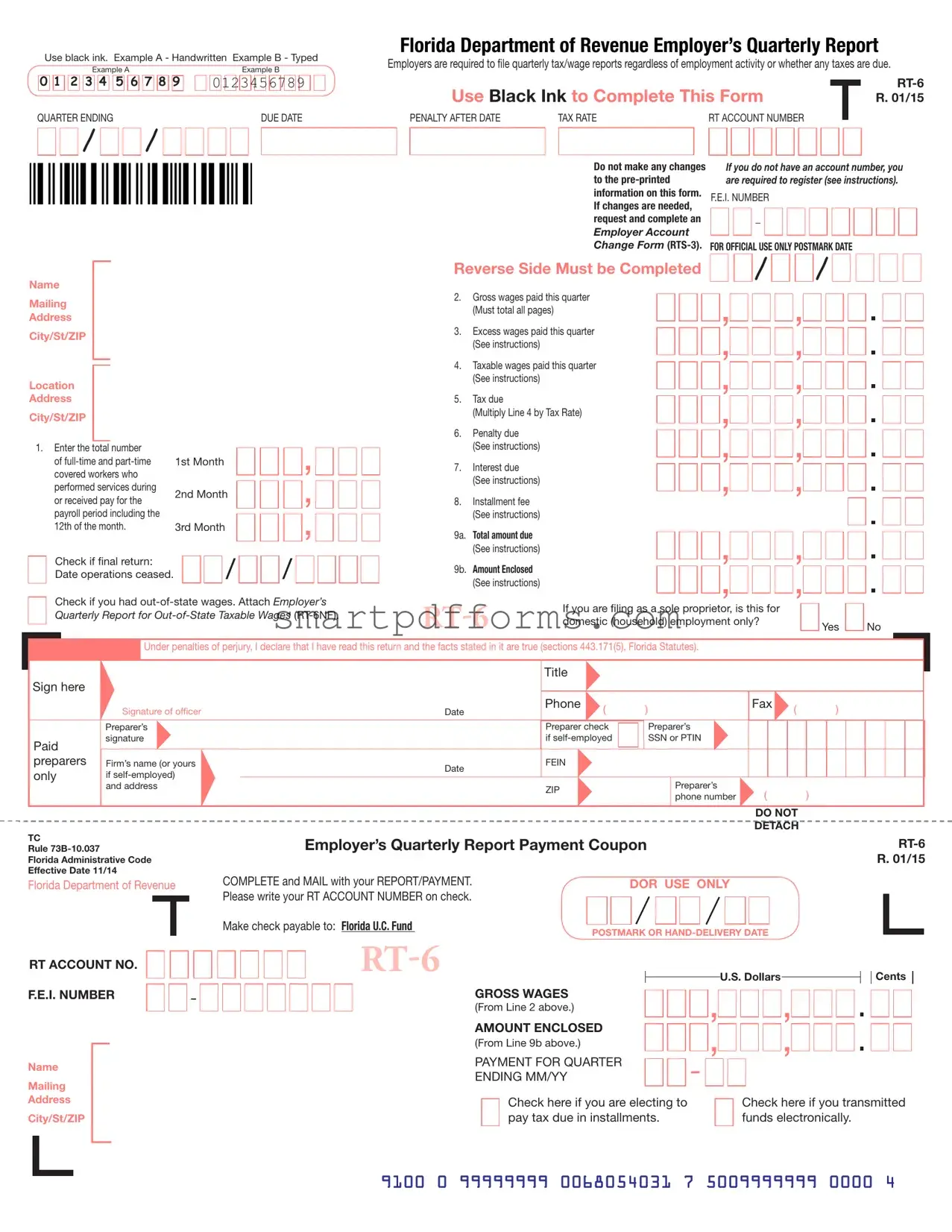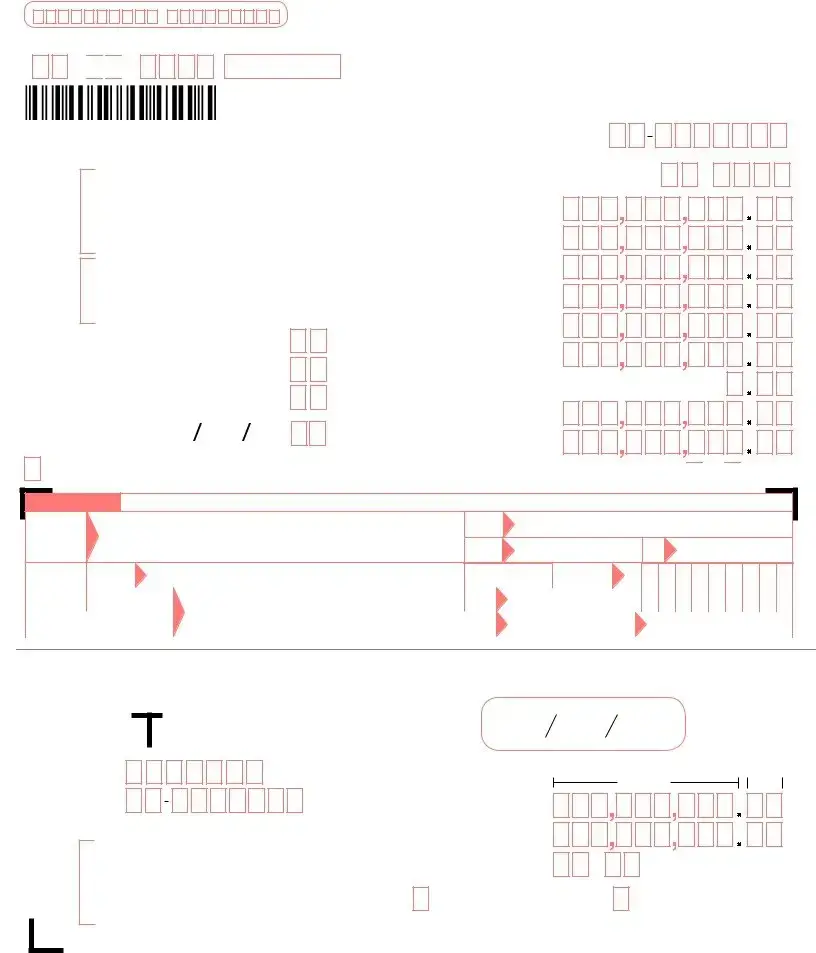Understanding the intricacies of the Florida Department of Revenue Employer’s Quarterly Report, commonly known as the RT-6 form, is essential for employers operating within the state. Required to be filled out and submitted quarterly, this form plays a pivotal role in tax and wage reporting for businesses. Employers must report details such as total gross wages paid, taxable wages, and the taxes due from those wages, using black ink to ensure the clarity and legibility of the information provided. Furthermore, the form outlines the need for declaring both full-time and part-time employees, with special sections dedicated to addressing excess wages paid within the quarter and other relevant calculations that affect the tax amount due. The RT-6 form also accommodates situations such as final returns, amendments due to out-of-state wages, and the potential penalties, interest, or installment fees applicable if deadlines are not met. Designed to streamline the process, the form includes a payment coupon and emphasizes the importance of using precise information to prevent discrepancies that could lead to audits or penalties under the perjury laws outlined in sections 443.171(5), Florida Statutes. With its structured format, the RT-6 form aids employers in maintaining compliance with state tax laws, ensuring they meet their reporting obligations accurately and efficiently.





 /
/
 Yes
Yes  No
No



 /
/




 -
- 
 -
- 












 -
- 
 -
- 












 -
- 
 -
- 












 -
- 
 -
- 












 -
- 
 -
- 












 -
- 
 -
- 












 -
- 
 -
- 












 -
- 
 -
- 






